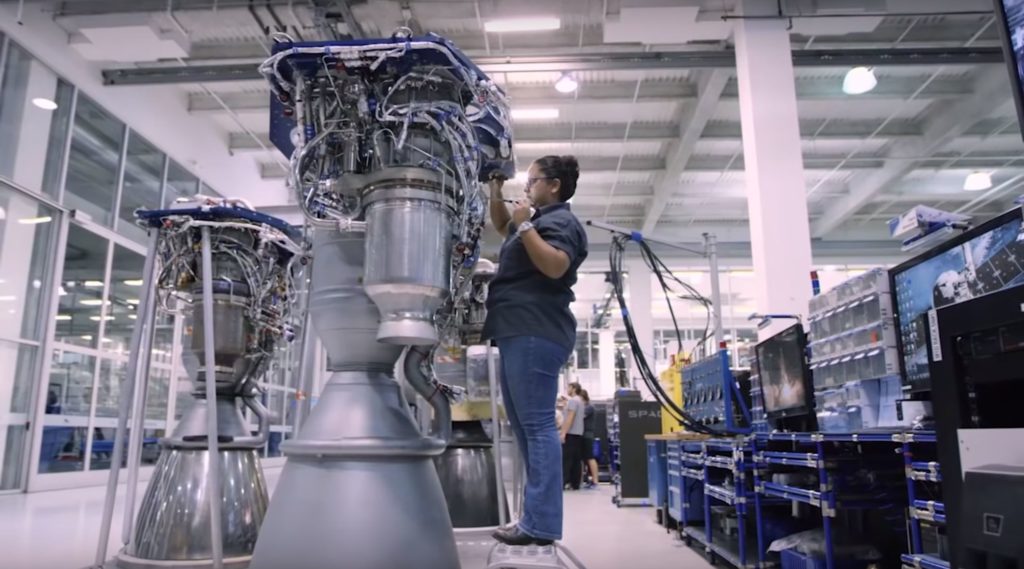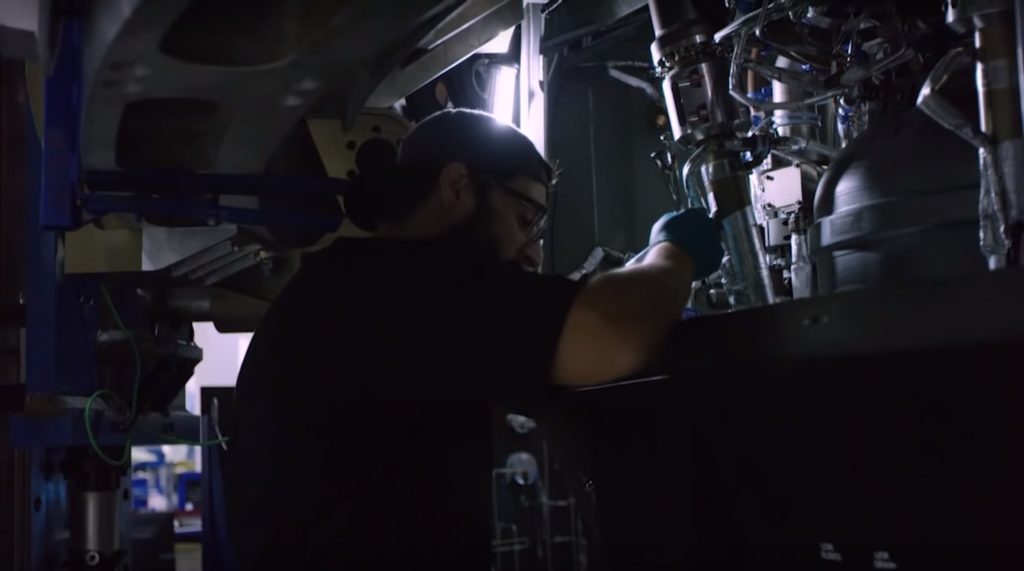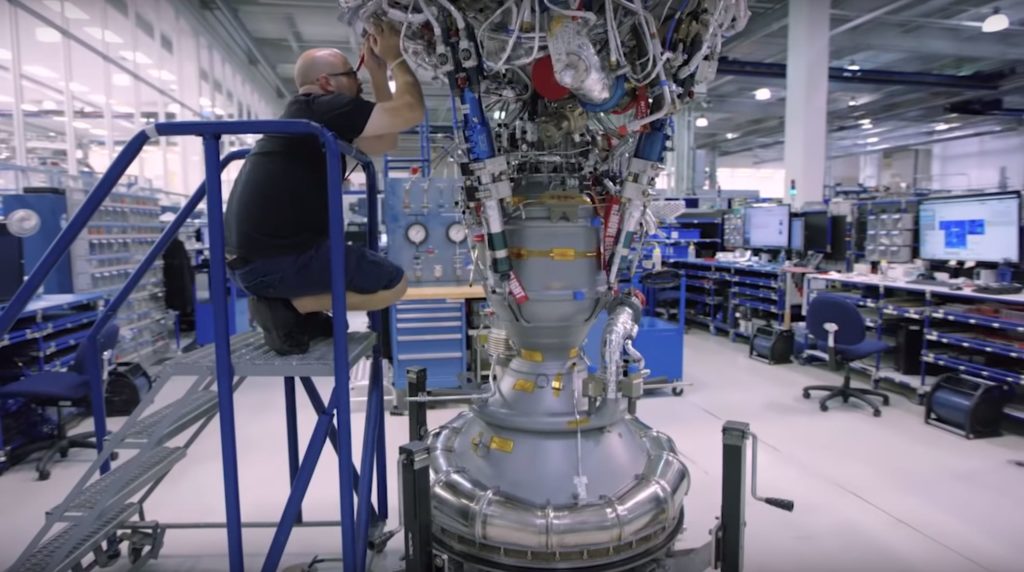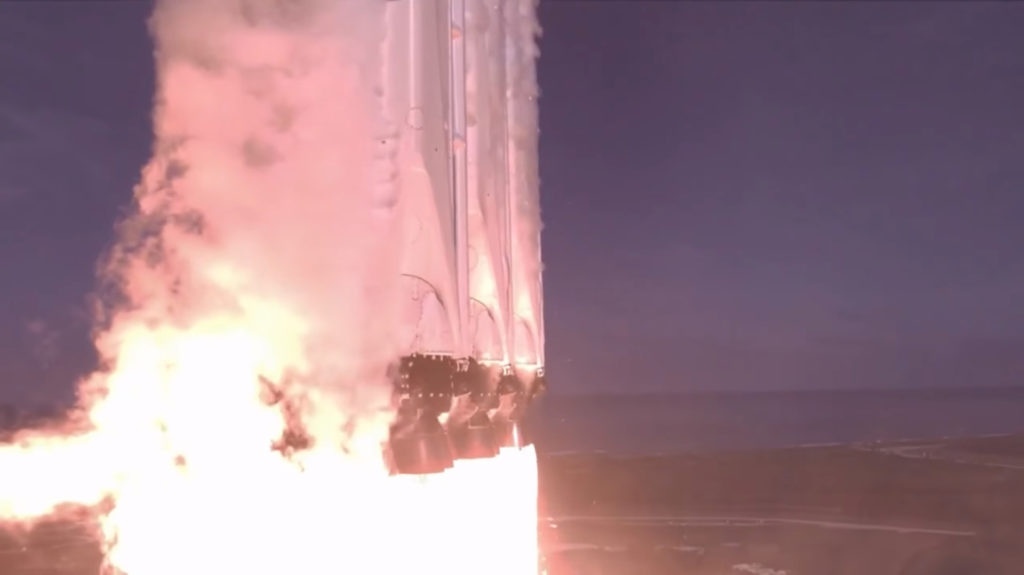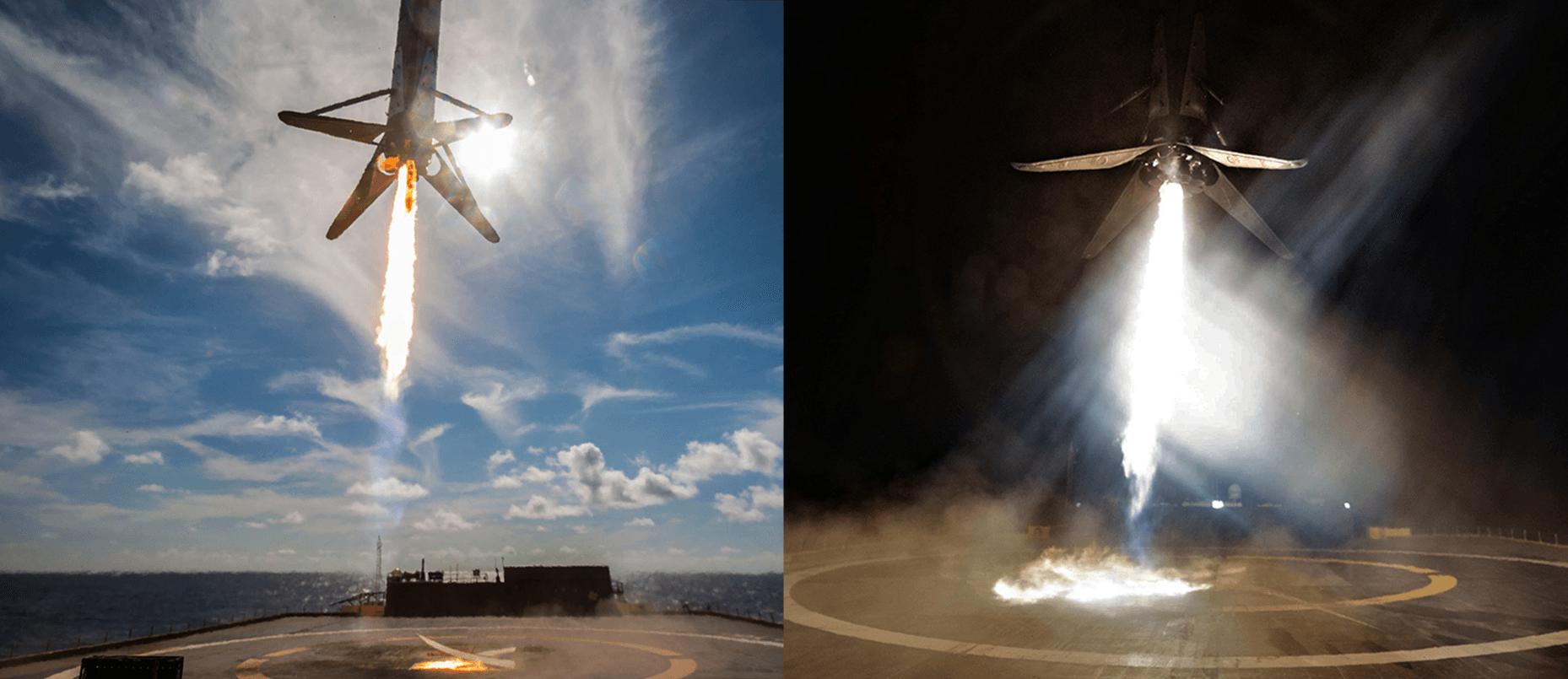
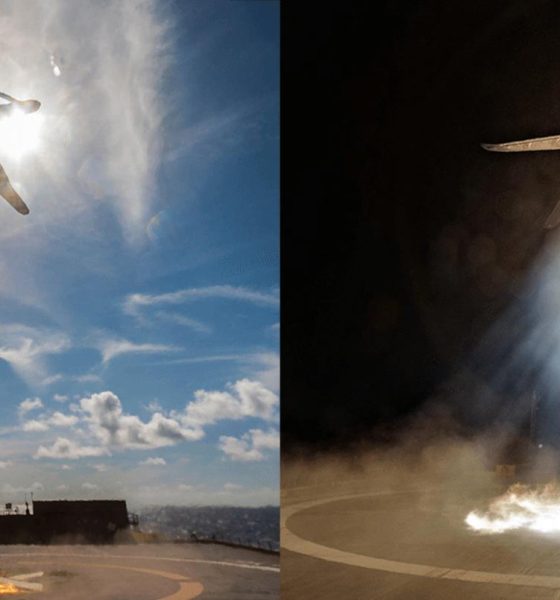
News
SpaceX’s Falcon 9 and Heavy manifest grows lopsided as launches align for Q4
For a variety of reasons both clear or otherwise, a significant number of SpaceX’s Falcon 9 and Falcon Heavy launches initially scheduled near the beginning or middle of the second half of 2018 are all slipping right into October, November, and December.
While communications satellite Telstar 18V’s two-week slip to NET September 8 and SAOCOM-1A’s own several-week tumble to October 7th appear to have their own respective and discernible reasons, namely some sort of range or payload issue (Telstar) and difficulties with the Falcon 9 rocket (SAOCOM), it’s much harder to know why multiple other payloads have slipped into late 2018.
Although the multiple slips and slides of several payloads and much of SpaceX’s H2 2018 launch manifest may be hard to parse alongside the year’s milestone first half, at least two reliable launch manifest sources (SpaceflightNow and one other) more or less independently corroborate the apparent realignment. Explanations, however, are far harder to find – to be expected in the business of space launch. Still, multiple launch delays can be traced to either payload or rocket issues.
- SpaceX technicians wrench on Merlin 1D and Merlin Vacuum engines. Raptor was apparently dramatically larger in person. (SpaceX)
- SpaceX technicians wrench on Merlin 1D and Merlin Vacuum engines. (SpaceX)
- SpaceX technicians wrench on Merlin 1D and Merlin Vacuum engines. (SpaceX)
Payload-side delays aplenty but rocket-slips, too
Iridium CEO Matt Desch, for example, noted that his company’s Iridium NEXT-8 launch of the constellation’s final 10 satellites is slipping from its original launch date target because of delays preparing the satellites for launch, rather than any issue with SpaceX rocket availability. While not official, the Falcon 9 launch of communications satellite Es’hail-2 has also rapidly jumped from the end of August or early September into Q4 2018 (likely NET October or November), hinting heavily at payload processing delays or technical issues with the complex satellite, as multi-month rocket-side delays would likely preclude interim September and October launches.
Still trying to nail the date down (satellite completion is gating, not rocket availability), but definitely won't be in September.
— Matt Desch (@IridiumBoss) August 13, 2018
Meanwhile, at least two of those prospective Q4 2018 SpaceX launches happen to be rideshare-dedicated, meaning that the payload consists of dozens of smaller satellites manifested and organized by a middleman company or agency. These two launches are Spaceflight’s SSO-A launch (~70 satellites) – currently NET November 2018 – and the US Air Force-led STP-2 mission, designed primarily to help SpaceX certify Falcon Heavy for Air Force launches while also placing roughly two dozen smaller satellites into orbit. STP-2 was delayed for multiple years as SpaceX gradually paced towards Falcon Heavy’s first real launch debut (February 2018), but launch delays (currently NET November 30 2018, probably 2019) will likely be caused by some combination of rocket, payload, and pad delays as SpaceX readies for what is essentially the second debut of much different Falcon Heavy.
While likely less a payload-side delay than a mountain-of-tedious-paperwork-and-bureaucracy delay, SpaceX’s NET November 2018 inaugural (uncrewed) demonstration launch of Crew Dragon, NASA scheduling documents published alongside an August 27 Advisory Council presentation suggest that the spacecraft will be ready for launch as early as September, whereas independent sources and visual observations have confirmed that the new Falcon 9 Block 5 booster (B1051) is either near the end or fully done with its McGregor, Texas acceptance testing. One certainly cannot blame SpaceX or NASA for caution at this stage, but the consequently uncertain launch debut of Crew Dragon almost certainly precludes any Falcon Heavy launches from Pad 39A in the interim, including STP-2’s theoretical NET November 30 launch date, which is literally inside Crew Dragon’s “November 2018” launch target.
- Falcon Heavy explodes off of Pad 39A, February 2018. (SpaceX)
- Falcon Heavy’s side boosters seconds away from near-simultaneous landings at Landing Zones 1 and 2. (SpaceX)
- SpaceX technicians wrench on Merlin 1D and Merlin Vacuum engines. Raptor was apparently dramatically larger in person. (SpaceX)
- It’s currently unclear whether B1046 or B1048 will become the first SpaceX rocket to fly three times. (Tom Cross)
- Falcon 9 B1048 stands proud after its West Coast launch debut, August 2nd. (Pauline Acalin)
On the other hand, several recent delays of SpaceX’s imminent (-ish) launch of Argentinian Earth observation satellite SAOCOM-1A have been suggested by several employees of the country’s CONAE space agency to be rocket-related, as they understand that the satellite itself is effectively ready to head to orbit at any time. It has yet to be officially confirmed, but it’s understood that Falcon 9 B1048 – previously flown on the launch of Iridium-7 – is being refurbished for SAOCOM-1A, potentially contributing to launch delays as SpaceX cautiously works through the inaugural reuses of some of its very first serial Falcon 9 Block 5 boosters.
Time will soon tell, as launching the roughly 8 to 10 launches tentatively remaining on SpaceX’s 2018 manifest will require extensive reuse of Block 5 boosters if multiple slips into 2019 are to be prevented. Regardless, best of luck to SpaceX’s technicians and engineers as they beat back rocket demons, grapple with uncooperative satellite payloads, and navigate the winding paths of Department of Defense and NASA rocket launch certifications.
For prompt updates, on-the-ground perspectives, and unique glimpses of SpaceX’s rocket recovery fleet check out our brand new LaunchPad and LandingZone newsletters!

News
Tesla FSD fleet is nearing 7 billion total miles, including 2.5 billion city miles
As can be seen on Tesla’s official FSD webpage, vehicles equipped with the system have now navigated over 6.99 billion miles.

Tesla’s Full Self-Driving (Supervised) fleet is closing in on almost 7 billion total miles driven, as per data posted by the company on its official FSD webpage.
These figures hint at the massive scale of data fueling Tesla’s rapid FSD improvements, which have been quite notable as of late.
FSD mileage milestones
As can be seen on Tesla’s official FSD webpage, vehicles equipped with the system have now navigated over 6.99 billion miles. Tesla owner and avid FSD tester Whole Mars Catalog also shared a screenshot indicating that from the nearly 7 billion miles traveled by the FSD fleet, more than 2.5 billion miles were driven inside cities.
City miles are particularly valuable for complex urban scenarios like unprotected turns, pedestrian interactions, and traffic lights. This is also the difference-maker for FSD, as only complex solutions, such as Waymo’s self-driving taxis, operate similarly on inner-city streets. And even then, incidents such as the San Francisco blackouts have proven challenging for sensor-rich vehicles like Waymos.
Tesla’s data edge
Tesla has a number of advantages in the autonomous vehicle sector, one of which is the size of its fleet and the number of vehicles training FSD on real-world roads. Tesla’s nearly 7 billion FSD miles then allow the company to roll out updates that make its vehicles behave like they are being driven by experienced drivers, even if they are operating on their own.
So notable are Tesla’s improvements to FSD that NVIDIA Director of Robotics Jim Fan, after experiencing FSD v14, noted that the system is the first AI that passes what he described as a “Physical Turing Test.”
“Despite knowing exactly how robot learning works, I still find it magical watching the steering wheel turn by itself. First it feels surreal, next it becomes routine. Then, like the smartphone, taking it away actively hurts. This is how humanity gets rewired and glued to god-like technologies,” Fan wrote in a post on X.
News
Tesla starts showing how FSD will change lives in Europe
Local officials tested the system on narrow country roads and were impressed by FSD’s smooth, human-like driving, with some calling the service a game-changer for everyday life in areas that are far from urban centers.

Tesla has launched Europe’s first public shuttle service using Full Self-Driving (Supervised) in the rural Eifelkreis Bitburg-Prüm region of Germany, demonstrating how the technology can restore independence and mobility for people who struggle with limited transport options.
Local officials tested the system on narrow country roads and were impressed by FSD’s smooth, human-like driving, with some calling the service a game-changer for everyday life in areas that are far from urban centers.
Officials see real impact on rural residents
Arzfeld Mayor Johannes Kuhl and District Administrator Andreas Kruppert personally tested the Tesla shuttle service. This allowed them to see just how well FSD navigated winding lanes and rural roads confidently. Kruppert said, “Autonomous driving sounds like science fiction to many, but we simply see here that it works totally well in rural regions too.” Kuhl, for his part, also noted that FSD “feels like a very experienced driver.”
The pilot complements the area’s “Citizen Bus” program, which provides on-demand rides for elderly residents who can no longer drive themselves. Tesla Europe shared a video of a demonstration of the service, highlighting how FSD gives people their freedom back, even in places where public transport is not as prevalent.
What the Ministry for Economic Affairs and Transport says
Rhineland-Palatinate’s Minister Daniela Schmitt supported the project, praising the collaboration that made this “first of its kind in Europe” possible. As per the ministry, the rural rollout for the service shows FSD’s potential beyond major cities, and it delivers tangible benefits like grocery runs, doctor visits, and social connections for isolated residents.
“Reliable and flexible mobility is especially vital in rural areas. With the launch of a shuttle service using self-driving vehicles (FSD supervised) by Tesla in the Eifelkreis Bitburg-Prüm, an innovative pilot project is now getting underway that complements local community bus services. It is the first project of its kind in Europe.
“The result is a real gain for rural mobility: greater accessibility, more flexibility and tangible benefits for everyday life. A strong signal for innovation, cooperation and future-oriented mobility beyond urban centers,” the ministry wrote in a LinkedIn post.
News
Tesla China quietly posts Robotaxi-related job listing
Tesla China is currently seeking a Low Voltage Electrical Engineer to work on circuit board design for the company’s autonomous vehicles.

Tesla has posted a new job listing in Shanghai explicitly tied to its Robotaxi program, fueling speculation that the company is preparing to launch its dedicated autonomous ride-hailing service in China.
As noted in the listing, Tesla China is currently seeking a Low Voltage Electrical Engineer to work on circuit board design for the company’s autonomous vehicles.
Robotaxi-specific role
The listing, which was shared on social media platform X by industry watcher @tslaming, suggested that Tesla China is looking to fill the role urgently. The job listing itself specifically mentions that the person hired for the role will be working on the Low Voltage Hardware team, which would design the circuit boards that would serve as the nervous system of the Robotaxi.
Key tasks for the role, as indicated in the job listing, include collaboration with PCB layout, firmware, mechanical, program management, and validation teams, among other responsibilities. The role is based in Shanghai.
China Robotaxi launch
China represents a massive potential market for robotaxis, with its dense urban centers and supportive policies in select cities. Tesla has limited permission to roll out FSD in the country, though despite this, its vehicles have been hailed as among the best in the market when it comes to autonomous features. So far, at least, it appears that China supports Tesla’s FSD and Robotaxi rollout.
This was hinted at in November, when Tesla brought the Cybercab to the 8th China International Import Expo (CIIE) in Shanghai, marking the first time that the autonomous two-seater was brought to the Asia-Pacific region. The vehicle, despite not having a release date in China, received a significant amount of interest among the event’s attendees.
